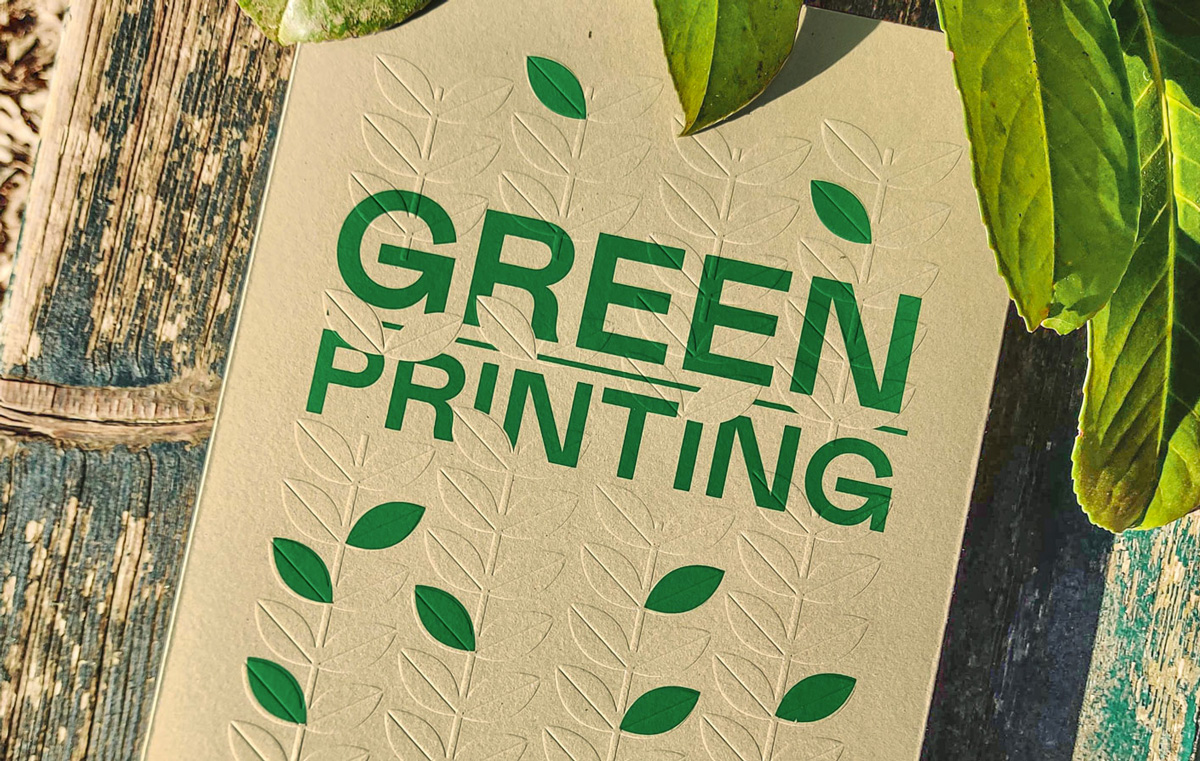Sustainability in Print Marketing: Going Green in the Digital Age

September 5, 2024
As businesses and consumers alike become more environmentally conscious, sustainability is no longer just an option—it's a priority. While digital marketing is often seen as the more eco-friendly route, print marketing can also embrace sustainability with the right practices. In fact, by adopting green printing solutions, companies can reduce their environmental footprint while still benefiting from the tangible, impactful nature of print. This blog explores how your Reno business can incorporate sustainable practices into your print marketing campaigns, all while maintaining effectiveness in the digital age.
1. The Environmental Impact of Print Marketing
For many years, print marketing has faced scrutiny for its environmental impact, particularly due to paper waste, ink production, and energy consumption in the printing process. However, advancements in technology and greener alternatives have made it possible to significantly reduce these negative effects. By making sustainable choices, your business can still leverage the power of print without contributing to environmental harm.
Eco-Friendly Solutions:
- FSC-Certified Paper: Choose paper from responsibly managed forests to ensure that the materials used in your print campaigns are sustainable.
- Recycled Paper: Opt for recycled paper to reduce the demand for virgin materials and promote recycling efforts.
- Vegetable-Based Inks: These inks are a greener alternative to petroleum-based inks, reducing the use of harmful chemicals and making print materials more environmentally friendly.
2. Sustainable Printing Practices for Reno Businesses
Reno businesses can now take advantage of a variety of sustainable printing options, thanks to local print shops that have adopted green practices. Sustainable printing not only reduces waste but also lowers energy consumption and eliminates toxic chemicals from the production process. This benefits both the environment and your brand's image.
Examples of Green Printing Practices:
- Waterless Printing: This process eliminates the need for water and harmful chemicals, reducing waste and emissions.
- Digital Printing: Digital printing uses less ink and paper compared to traditional methods and is more efficient for smaller print runs.
- Energy-Efficient Equipment: Many print shops are investing in equipment that uses less energy and reduces the overall carbon footprint of their operations.
3. Why Sustainability Matters for Your Brand
Today's consumers are more discerning than ever, and they expect the brands they support to reflect their values, including sustainability. By incorporating green printing practices into your marketing, you not only reduce environmental impact but also strengthen your brand’s reputation. Communicating your eco-friendly efforts can build trust and loyalty with eco-conscious customers who are increasingly prioritizing sustainability in their purchasing decisions.
Tips for Communicating Sustainability:
- Eco-Labels: Include eco-friendly certifications or icons on your printed materials, such as FSC or recycled paper symbols.
- Storytelling: Use your print marketing to tell the story of your sustainability journey. Whether it's using recycled paper or vegetable-based inks, let your customers know how you're making a difference.
- Recycling Initiatives: Encourage your customers to recycle or reuse your printed materials. For instance, include instructions on how to recycle brochures or repurpose packaging.
4. Balancing Print and Digital for a Sustainable Strategy
Sustainability in print marketing doesn’t mean you have to give up digital entirely. In fact, balancing print with digital marketing can create a holistic, eco-friendly strategy that maximizes reach while minimizing environmental impact. By adopting sustainable print practices and combining them with the efficiency of digital marketing, your Reno business can engage consumers across multiple platforms without sacrificing its environmental goals.
Suggestions for a Balanced Approach:
- Direct Mail with Digital Integration: Use QR codes on your print materials to direct consumers to your digital channels, combining the tactile impact of print with the efficiency of digital.
- Data-Driven Print Campaigns: Use insights from your digital efforts to target your print marketing more effectively, reducing unnecessary printing.
- Print-on-Demand: Print only what you need, when you need it, to avoid excess production and reduce waste.
5. Success Stories in Sustainable Print Marketing
Several businesses are already leading the way in sustainable print marketing, showing that it’s possible to align environmental responsibility with business goals. From using recycled materials to offering carbon-neutral printing options, these companies have embraced sustainability without compromising the effectiveness of their campaigns.
Case Study Example: A Reno-based business might adopt sustainable printing practices, such as using recycled paper for direct mail campaigns or vegetable-based inks for promotional materials. By doing so, they not only reduce their environmental impact but also appeal to a growing base of eco-conscious consumers.
Conclusion: Embracing Sustainability in Print Marketing
Sustainability is more than just a trend—it's a critical factor in today’s business landscape. By embracing sustainable print marketing practices, your Reno business can reduce its environmental impact while building stronger connections with eco-conscious customers. From using recycled paper and vegetable-based inks to partnering with print shops that prioritize green printing methods, there are plenty of ways to make your print marketing both effective and environmentally responsible.
As more businesses strive to go green, adopting sustainable print practices will not only set your brand apart but also ensure that your marketing efforts align with the values of your customers. Go green today, and make a lasting impression with both your audience and the environment.